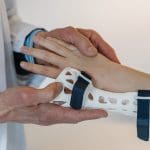
Revolutionizing Patient Care: How Advanced Technologies Are Making a Difference
Today’s orthopedic practices are navigating an era where technological innovation is not just beneficial—it’s essential. Integrating advanced technologies into orthopedic surgery and patient care is driving unprecedented improvements in patient outcomes and practice efficiency.
This blog post delves into groundbreaking advancements like robotic surgery and regenerative medicine, spotlighting how these innovations are revolutionizing the field. By embracing these technologies, orthopedic practices can elevate the quality of care they provide and position themselves as leaders in the medical community.
The Impact of Advanced Technologies in Orthopedic Practices
Advanced technologies have revolutionized the delivery of orthopedic care, offering numerous benefits to both patients and practitioners. From precision in surgical procedures to faster recovery times, these advancements are reshaping the landscape of orthopedic healthcare. By integrating these technologies into their practices, orthopedic surgeons can offer higher-quality care, improve patient satisfaction, and drive practice growth.
Types of Advanced Technologies Making a Difference
- Robotic Surgery
Robotic surgery systems provide orthopedic surgeons with enhanced precision, flexibility, and control during operations. These systems use minimally invasive techniques that result in smaller incisions, reduced pain, and quicker recovery times for patients. Robotic surgery has become a game-changer in procedures such as joint replacements and spinal surgeries, offering unparalleled accuracy and improved outcomes.
- Regenerative Medicine
Regenerative medicine focuses on repairing or replacing damaged tissues using the body’s own healing processes. Techniques such as stem cell therapy and platelet-rich plasma (PRP) injections promote tissue regeneration and accelerate recovery. These therapies are particularly beneficial for treating chronic conditions like osteoarthritis and sports injuries, providing patients with less invasive options for pain relief and functional restoration.
- Artificial Intelligence (AI)
AI-powered tools are being increasingly used to enhance diagnostic accuracy and personalize treatment plans. Machine learning algorithms analyze vast amounts of patient data to predict outcomes and recommend optimal treatment paths. AI applications in orthopedic imaging, for instance, assist in identifying abnormalities with greater precision, leading to early intervention and better patient management.
- 3D Printing
3D printing technology is revolutionizing the creation of custom orthopedic implants and prosthetics. Surgeons can now design and print patient-specific devices that perfectly match the anatomical structures involved. This customization improves the fit and function of implants, leading to better surgical outcomes and patient satisfaction.
Implementing Advanced Technologies in Your Practice
Adopting new technologies requires careful planning and execution. Here are some steps to integrate advanced technologies into your orthopedic practice effectively:
Assessment and Planning: Evaluate your practice’s needs and identify which technologies can address those needs. Develop a detailed implementation plan with clear timelines.
Training and Education: Ensure that your staff is well-trained in using new technologies. Invest in continuous education to keep abreast of the latest advancements.
Infrastructure Development: Upgrade your practice’s infrastructure to support new technologies, such as installing the necessary hardware and software.
Monitoring and Evaluation: Establish metrics to monitor the performance of new technologies. Track patient outcomes, procedural efficiency, and overall satisfaction to evaluate the impact. Create feedback mechanisms for patients and staff to identify areas for improvement and ensure seamless integration.
Continuous Improvement: Be prepared to adapt and refine your processes based on feedback and performance data.
Scaling Up: Once initial trials show positive results, scale up the use of technologies across more procedures and patient cases.
Leading the Charge in Technological Integration
Technological advancements are transforming orthopedic practices, enabling them to provide exceptional care and achieve better patient outcomes. By implementing cutting-edge technologies like robotic surgery, regenerative medicine, AI, and 3D printing, orthopedic surgeons can elevate their practice and stay competitive in the ever-changing healthcare landscape.
At American Orthopedic Partners (AOP), we help our partner practices stay on the leading edge of these advancements, providing the support and resources needed to implement and benefit from the latest technologies. Contact AOP today for a consultation and discover how we can help you integrate advanced technologies into your practice.













Sorry, the comment form is closed at this time.